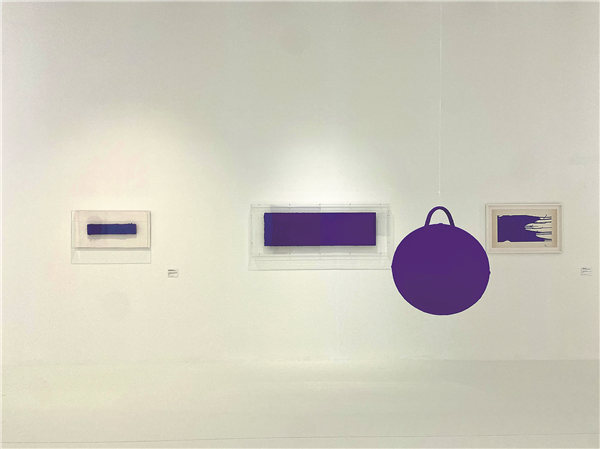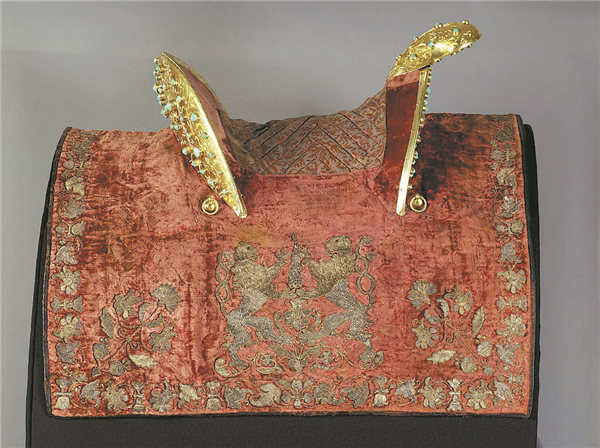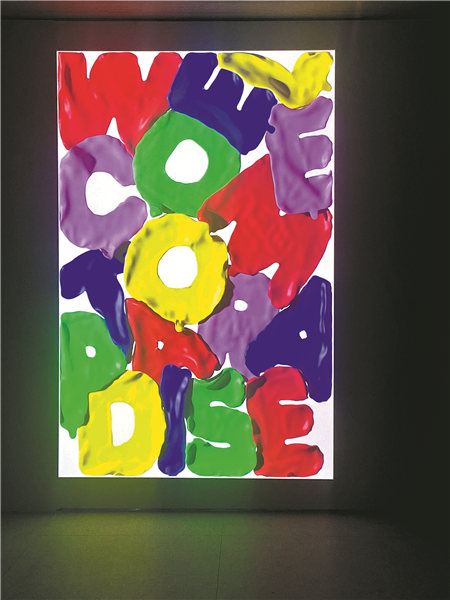

Into the blue
Not everyone will be aware of Yves Klein (1928-62), the French artist who, in his short-lived life, pioneered the art movement in Europe after World War II. However, many will have seen the unique shade of blue he invented. With the help of a chemist, Klein created a formula, consisting of dry pigment and resin, which was known as International Klein Blue, or IKB for short. Klein used IKB to produce dozens of monochromatic works to show not only his love of the color, but also of the sky, the sea and their emptiness, depth and vastness, as well as any other forms of space he wanted to experiment with. What even fewer people will know is how he evolved from a judo practitioner to a member of the art vanguard, an avid explorer of singular color and a painter of infinite space. For the curious, the journey is laid out at Yves Klein — Painter of Space, an exhibition set to run until Oct 3 and co-mounted by the Guardian Art Center in Beijing and the Yves Klein Archives in Paris. Over 60 paintings, drawings, sculptures, images and videos are on show to take visitors into the mind of a great artist, who left behind him a rich oeuvre and archive, encouraging people to continue his exploration of the relations between the visible and invisible, and bodily movement and spiritual world. The exhibition is part of this year's Festival Croisements, an event of cultural exchanges between China and France.
10 am-6 pm, closed on Mondays.1 Wangfujing Street, Dongcheng district, Beijing.

Princely treasures
The Esterhazy family was one of historical importance, producing a string of influential figures in Hungarian politics, religion, military circles and artistic patronage. Its glory sparkled from the 16th century to well into the 20th, and the family castle, Esterhaza, was of such Renaissance grandeur, it was called the Versailles of Hungary. Now, 34 pieces of art and crafts, which were once owned by prominent members of the Esterhazy family, are being displayed in China for the first time at the ongoing exhibition Silk Robes from Princes, held at the China National Silk Museum in Hangzhou, Zhejiang province. It displays the diversity and abundance of the family's treasury and its predominance in the 16th and 17th centuries. The displays include 13 silk and velvet robes once worn by male family members, as well as household objects and ceremonial accessories laced with silk patterns. It reveals the luxuriant lifestyle led by the aristocracy of the time, especially an enthusiasm for silk and jewelry, through which one can glimpse the exchanges between the East and West via the ancient Silk Road. The exhibits are from the collection of the Museum of Applied Arts, Budapest, and are on show until Aug 21.
12 am-5 pm, Monday; 9 am-5 pm, Tuesday to Sunday. 73-1 Yuhuangshan Road, Hangzhou, Zhejiang province. 0571-8703-5150.

Art of motion
The arrival of digital technology has greatly redefined the arena of graphic design and how it is presented. No longer is it confined to paper, but is instead mostly seen on the glowing screen of a portable gadget, like that of a phone, laptop or wearable electronics. The situation has prompted the development of "Motion Graphics", through which animated or digital footage is incorporated into the graphic design to generate a sense of motion. This global trend is being addressed at View in Motion, at the Art Museum of the Central Academy of Fine Arts in Beijing. Running until Aug 20, the exhibition gathers top-notch designers from across the world. It provides visitors with a dazzling visual treat, while aiming to inspire a discussion about the implementation of Motion Graphics in the home, where it is still in its early phase.
9:30 am-5:30 pm, closed on Mondays. 8 Huajiadi Nanlu, Chaoyang district, Beijing. 010-6477-1575.